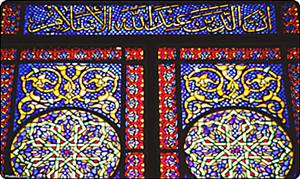Dupont Pakistan Client /Server Architecture IT Report
INTRODUCTION
Dupont Pakistan uses Client /Server architecture in their network of about 28 workstations. There are two servers, i.e. one Primary Domain Controller (PDC) and one Backup Domain Controller (BDC). The server specifications will be discussed in the next section. Here is a description of how a Client/Server system works.
Figure 1
A simple Client /Server environment is depicted in figure 1. In a client-server environment like Windows NT or Novell NetWare, files are stored on a centralized, high speed file server PC that is made available to client PCs. Network access speeds are usually faster than those found on peer-to-peer networks, which is reasonable given the vast numbers of clients that this architecture can support. Nearly all network services like printing and electronic mail are routed through the file server, which allows networking tasks to be tracked. Inefficient network segments can be reworked to make them faster, and users’ activities can be closely monitored. Public data and applications are stored on the file server, where they are run from client PCs’ locations, which makes upgrading software a simple task–network administrators can simply upgrade the applications stored on the file server, rather than having to physically upgrade each client PC.
In the client-server diagram above, the client PCs are shown to be separate and subordinate to the file server. The clients’ primary applications and files are stored in a common location. File servers are often set up so that each user on the network has access to his or her “own” directory, along with a range of “public” directories where applications are stored. If the two clients above want to communicate with each other, they must go through the file server to do it. A message from one client to another is first sent to the file server, where it is then routed to its destination. With tens or hundreds of client PCs, a file server is the only way to manage the often complex and simultaneous operations that large networks require.
In client-server networks, a print server, a small box with at least two connectors, normally handles network printing: one for a printer, and another that attaches directly to the network cabling. Some print servers have more than two ports… they may, for example, support 2, 3, or 4 printers simultaneously. When a user sends a print job, it travels over the network cabling to the file server where it is stored. When the print server senses that the job is waiting, it moves it from the file server to its attached printer. When the job is finished, the print server returns a result message to the file server, indicating that the process is complete.
In the figure 2 below, the client PC sends a job to the file server. The file server, in turn, forwards the job to the print server, which sends it to the printer when it’s available. Any client on the network can access the printer in this fashion, and it’s quite fast. The print server can be placed anywhere on the network, and a network can have more than one print server… possibly one in an office’s accounting department, another in marketing, and so on.
Figure 2
Print Servers are available for both client-server and peer-to-peer networks. They’re incredibly convenient because they let you put a printer anywhere along your network even if there isn’t a computer nearby. However, users often opt not to use a print-server with their peer-to-peer network. Why? Because every computer’s resources are available to everyone on the network, A can print a job on B’s printer… just as if A had a printer attached to her computer. In this example, the printer is attached to the computer on the right. When the PC on the left sends a job, it “thinks” that it is printing to a printer of its own. In actuality, the job travels over the network cables to the PC on the right, which stores and prints the job in the background. The user at the PC with the printer is never interrupted while his computer processes and prints the job transparently.
When a client-server network needs a gateway to the world, the network administrator usually installs a remote-node server, which serves up two functions: remote access and modem sharing. Most remote-node servers attach directly to the network cabling; they provide a bridge between the network, a modem, and a telephone line.
Remote access allows users to dial into their home networks from anywhere in the world. Once a connection has been established over ordinary phone lines by modem, users can access any programs or data on the network just as if they were seated at one of its local workstations. Some remote access servers only provide access to a file server’s disk drives. Others can provide access to both the file server and direct access to any PC’s hard disk on the network. This saves time because it allows a remote user to communicate directly with any network user without having to go through the file server.
Modem sharing lets local network users dial out from their individual network computers to access the Internet. After firing up their favorite communications software, local users establish a link with the remote-node server over the network, which opens up an outgoing telephone line. Users’ individual PCs don’t need modems, which is a big money saver… only a single modem & phone line are required for tens or hundreds of users. In the case of peer-to-peer networks, by contrast, every PC requires its own modem for access to the outside world, unless you use special software packages like Wingate or Sygate that can provide the same ability to a Peer-to-Peer network.
THE TECHNOLOGY AND HARWARE
The LAN technologies invented so far are numerous, so it imperative that we choose the best one available that fits our needs. Networks can be classified on the basis of their physical shape or typology.
Considerations When Choosing a Topology:
- Money. A linear bus network may be the least expensive way to install a network; you do not have to purchase concentrators.
- Length of cable needed. The linear bus network uses shorter lengths of cable.
- Future growth. With a star topology, expanding a network is easily done by adding another concentrator.
- Cable type. The most common cable in schools is unshielded twisted pair, which is most often used with star topologies.
Here is a brief over view of many of the LAN typologies available.
|
At Dupont Pakistan the LAN typology that is being used is star. When a network uses star typology, it means that all the computers are attached to a central point.
A star topology is designed with each node (file server, workstations, and peripherals) connected directly to a central network hub or concentrator (See fig. 3).
Data on a star network passes through the hub or concentrator before continuing to its destination. The hub or concentrator manages and controls all functions of the network. It also acts as a repeater for the data flow. This configuration is common with twisted pair cable; however, it can also be used with coaxial cable or fiber optic cable.
Figure 3
The cables used in star topologies are either shielded or unshielded twisted pair wires (STP or UTP). Dupont uses CAT-5, 10-100 mbps sable media for its network.
Star topologies are difficult to install, but once installed are easy to maintain and expand. A fault in a cable only affects the computer or node it is attached to and is easy to locate. The most widely used LAN technology is Ethernet with approximately 80% of all installed LANs using it.
Ethernet networks can be configured either with physical bus or physical star topologies. The bus configuration was the original configuration using coaxial cable. However the star configuration using UTP is now the dominant configuration due to the ease in which it can be expanded and maintained.
Advantages of a Star Topology
- Easy to install and wire.
- No disruptions to the network then connecting or removing devices.
- Easy to detect faults and to remove parts.
Disadvantages of a Star Topology
- Requires more cable length than a linear topology.
- If the hub or concentrator fails, nodes attached are disabled.
- More expensive than linear bus topologies because of the cost of the concentrators.
The personnel at Dupont did not know the reason of having a star typology. The networking specialists installed the network and since then they have been using it. The only reason for this, however, can be the ease of maintenance of this sort of network as it’s costly to hire technical personnel for maintenance on a regular basis.
THE HARDWARE:
SERVERS
The servers that are being used at Dupont Pakistan are of the following specification.
Figure 4: Dell PowerEdge
Dell 400 MHZ PowerEdge
128 MB RAM
26 GB Hard Disk
As the servers are too old we couldn’t have any further information on the server choice. But as the Dell advertises its servers.
“You need a server that can hold its own, but your budget is tight. Look no further! The PowerEdge 1400SC delivers exceptional value with its dual processor capability, two on-board SCSI channels and embedded Ethernet controller.”
ROUTERS
The Dupont Pakistan office is connected to its parent company in the USA through a Wide Area Network (WAN). They use routers in order to connect to the WAN.
Figure 5. Cisco 2500
The basic purpose of routers is to connect two heterogeneous networks. It’s just like a special purpose computer dedicated to interconnecting activity. Routers work at the network layer – they actually understand the protocols being used to carry the data over the network. And since they understand the protocols, they can use rules to decide what to do with a specific piece of data. Because of this, routers are useful in linking networks that are used for different purposes or by different organizations. One can apply rules or filters to let certain data in, but keep other data out. Or to route data serving one purpose over a certain set of network connections, while routing other data over other connections. This convenience comes at a price. The more detail a router must acquire about a specific piece of data before forwarding it on, the longer that piece of data is delayed before being sent on to its destination. Also, the greater configurability of routers requires faster, more expensive hardware. All said, in most of today’s larger networks you’ll find a mix of switches (basically a multiport bridge) and routers. Both have their strengths and weaknesses – but together they make a potent match.














